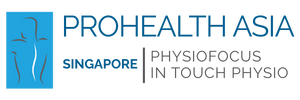Is Dry Needling Right for You?
If you’ve ever had muscle pain that just won’t go away, no matter how much you stretch or massage it, you’re not alone. Many people experience ongoing tension or discomfort, especially after injuries, intense training, or long hours at a desk.
This is where dry needling comes in. It’s a modern physiotherapy technique that targets stubborn knots and tight muscles, helping your body relax and heal more effectively.
At In Touch Physio, we use dry needling to help people move more freely and recover faster. But is it the right option for you? Let’s explore what dry needling is, how it works, and who can benefit from it.
What Is Dry Needling?
Dry needling is a technique that uses a very thin, sterile needle to release tight spots in your muscles, known as trigger points. These are areas of tension that can cause pain, limit movement, and sometimes even refer discomfort to other parts of your body.
While dry needling might look a bit like acupuncture, the two are quite different. Acupuncture is based on traditional Chinese medicine and energy flow. Dry needling, on the other hand, is based on modern anatomy and science. It focuses directly on the muscular and nervous systems to relieve pain and restore function.
How Does It Work?
When your physiotherapist inserts a needle into a trigger point, it creates a small twitch response in the muscle. This helps the muscle relax, improves blood flow, and reduces the tension that may be causing pain.
Dry needling can also help reset the way your nerves and muscles interact. This is especially helpful if you’ve been dealing with pain or dysfunction for a while.
What Can Dry Needling Help With?
Dry needling is a great option for a wide range of physical issues, especially when tight muscles or restricted movement are involved. It’s commonly used to treat:
Persistent neck or back pain
Shoulder pain, including rotator cuff issues
Tension headaches and jaw pain
Hip or glute pain
Sports injuries and muscle strains
Overuse injuries like tennis elbow or shin splints
Tight calves, hamstrings, or forearms
Postural pain from long hours at a desk
Many people notice a big difference even after just one session, especially when dry needling is combined with other physiotherapy techniques.
What Does Dry Needling Feel Like?
If you’re wondering whether dry needling is painful, the answer is usually no — but you might feel a quick twitch or a dull ache when the needle hits a trigger point. Most people describe it as strange rather than painful, and any discomfort usually fades within seconds.
After treatment, the area may feel a little sore, like after a workout, but this usually passes within a day or two. Your physio will give you aftercare tips and, if needed, gentle stretches or exercises to support your recovery.
Is It Safe?
Yes, dry needling is safe when performed by a trained and licensed physiotherapist. At In Touch Physio, our team follows strict hygiene and safety protocols. We also take time to assess whether the treatment is appropriate for your specific needs, health history, and comfort level.
Who Is Dry Needling For?
You might be a good candidate for dry needling if:
You have tight or painful muscles that don’t improve with regular stretching
You’re recovering from an injury and need faster muscle recovery
You deal with tension headaches, jaw pain, or nerve-related discomfort
You want to improve mobility and reduce pain without medication
Of course, dry needling isn’t right for everyone. If you have a bleeding disorder, are pregnant, or are uncomfortable with needles, we’ll discuss other options that may be better suited for you.
Ready to Try Dry Needling?
Dry needling can be a powerful tool in your recovery and performance journey. Whether you’re an athlete, a desk worker, or someone living with long-term pain, this treatment could help you feel better and move more freely.
At In Touch Physio, we combine dry needling with other hands-on therapies and tailored exercise programs to help you get lasting results.
Book a session with us today and let’s find out if dry needling is the right fit for your recovery.

